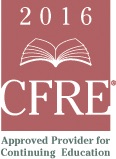
When you travel from New York to London, the shortest flight is about 6 hours and 45 minutes. When you return, the shortest flight is an hour longer. Flying east, we have tailwinds helping us along. Flying west, we’re pushing against headwinds.
Every time we make a plan, we’re also making assumptions. Some assumptions are simple and pretty universal – we all experience headwinds and tailwinds in flight.
But other times we are making assumptions based on our own experiences, sometimes unaware of the headwinds and tailwinds that are helping and hindering us.
For example, if you ask me how far the nearest Target store is, I’ll answer that it’s about 10 minutes from my home. Unconsciously, I’m assuming you have a car. If my neighbor doesn’t have a car, it will typically take over an hour – walk to the bus stop, take a bus several miles in the opposite direction from Target, so he can change to the bus that will take him there.
My tailwind is that I have a car and enough money to pay the insurance and fill the tank. His headwind is that he doesn’t have a car. Worse, he also has the headwind that he’s working two jobs, so the time it takes to get to Target is an even greater chunk out of his free time than it would be from mine. He’s flying west, while I’m flying east.
Estimating based on our own personal experience is natural.
It takes conscious effort to parse out the advantages and obstacles – tailwinds and headwinds – that make up our personal experience, so we can more clearly see the advantages and obstacles of others.
When we makes plans, our first inclination is to think about what works for us. What do we like, what resources do we have – time, cash, knowledge – that we can employ. Planning based on our own experience may work if everyone is just like us – same background, same experiences, same resources.
But our clients, patrons, staff members and visitors are not all the same.
To successfully serve the community, we have to consciously find ways to understand our clients’, patrons’, staff members’ and visitors’ experiences. Not just what the headwinds (and tailwinds) are, but also their ramifications. I may have known that my neighbor didn’t have a car; that doesn’t mean I understood what the implications were when it came to shopping and the decisions they force you to make. If you have to go through that much trouble to shop at Target, then it may make sense to pay the higher prices at the local bodega. The ramifications of one situation affect the next, which affect the next.
Before digging into the myriad of experiences of clients, patrons, staff and visitors, take time to consider the headwinds you’ve encountered growing up and getting to where you are in life. Then stop and consider all the tailwinds that have helped you on your way – the mentors, the education, sustenance, the visits to cultural institutions.
Which of these are universal? Which are uniquely yours? Which make you wonder about the tailwinds and headwinds of others?
To schedule a time to explore your board and staff headwinds and tailwinds, reach Susan Detwiler at sdetwiler@detwiler.com or www.detwiler.com.



